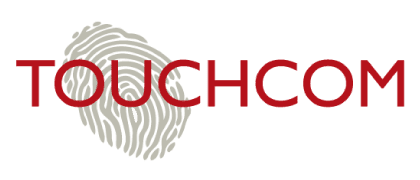Purchase Criteria for an Mobility Managed Platform
INTRODUCTION Investing in new mobile technology infrastructure is a big decision; it creates an opportunity to better position your company against its future competition. If the right choice is made, it could ensure mobility management success for years to come. A user-friendly Mobility Management Platform (MMP) can serve as the foundation for your enterprise’s data management and predictive analysis tasks, enabling success down the road despite ever-growing volumes of mobile devices that need to be secured and managed.
Can Unified Endpoint Management help with GDPR?
 The European Union’s (EU’s) General Data Protection Regulation (GDPR) goes into effect on May 25. If your enterprise mobility effort plans to lock program data down with GDPR, consider Unified Endpoint Management (UEM) the key to your company’s next-generation security. As businesses incorporate mobile technology into an increasing number of everyday workflows and processes, keeping employee devices and data safe will become more important than ever. That’s where UEM enters the equation…
The European Union’s (EU’s) General Data Protection Regulation (GDPR) goes into effect on May 25. If your enterprise mobility effort plans to lock program data down with GDPR, consider Unified Endpoint Management (UEM) the key to your company’s next-generation security. As businesses incorporate mobile technology into an increasing number of everyday workflows and processes, keeping employee devices and data safe will become more important than ever. That’s where UEM enters the equation…
Does your Organisations Enterprise Mobility Checklist look like this?
Enterprise mobility is a complicated, intricately interwoven set of processes and tasks. While each company handles program management differently, there are a few basics that, if handled effectively, maximise employee safety and overall success. Much like an airline pilot needs to complete a pre-flight checklist to ensure safe passage, mobility program managers need to make sure their complex technology operates safely and effectively as well. Does your enterprise mobility effort check off all the following boxes?
Do You View Mobility As An Expense To Be Minimised Or A Strategic Business Enabler?
 With 70% of the population predicted to be using smartphones by 2020, there’s no slowing down the advent of new technologies. These developments are also pushing traditional industries to rethink how they do business.
At the crux of this shift are IT management and Line of Business (LoB). The initiatives of these two departments often lack alignment due to their siloed nature within traditional business frameworks.
LoB goals move the business forward by focusing on customers and how to best serve them to increase revenues. At times, this push means having the newest technology available. Meanwhile, IT’s goal is to support the enterprise at the lowest cost possible. At times, these initiatives are in competition (at best) or at odds (at worst).
With 70% of the population predicted to be using smartphones by 2020, there’s no slowing down the advent of new technologies. These developments are also pushing traditional industries to rethink how they do business.
At the crux of this shift are IT management and Line of Business (LoB). The initiatives of these two departments often lack alignment due to their siloed nature within traditional business frameworks.
LoB goals move the business forward by focusing on customers and how to best serve them to increase revenues. At times, this push means having the newest technology available. Meanwhile, IT’s goal is to support the enterprise at the lowest cost possible. At times, these initiatives are in competition (at best) or at odds (at worst).
Tips to Understand and Reduce Mobile Device Total Cost of Ownership
 For a single mobile device, calculating annual carrier expenses doesn’t even begin to scratch the surface of Total Cost of Ownership (TCO). Voice and data, labour, Mobile Device Management (MDM), device hardware and software, and general IT administration and training all factor into this comprehensive annual figure. Below, we examine these costs and how a Managed Mobility Services (MMS) partner can help your program save money.
For a single mobile device, calculating annual carrier expenses doesn’t even begin to scratch the surface of Total Cost of Ownership (TCO). Voice and data, labour, Mobile Device Management (MDM), device hardware and software, and general IT administration and training all factor into this comprehensive annual figure. Below, we examine these costs and how a Managed Mobility Services (MMS) partner can help your program save money.
Seriously consider Software-First Mobility when evaluating potential Managed Mobility Service providers
One Mobility Management Platform
Companies are beginning to recognise that the security and standardisation benefits they achieve for their mobile fleets through an enterprise mobility platform should be applied to other corporate devices such as laptops and IoT equipment as well. Right now, with MDM or MAM solutions, enterprise












